TopKnot Leader
Topwater Transitions for Bass from Spring to Fall
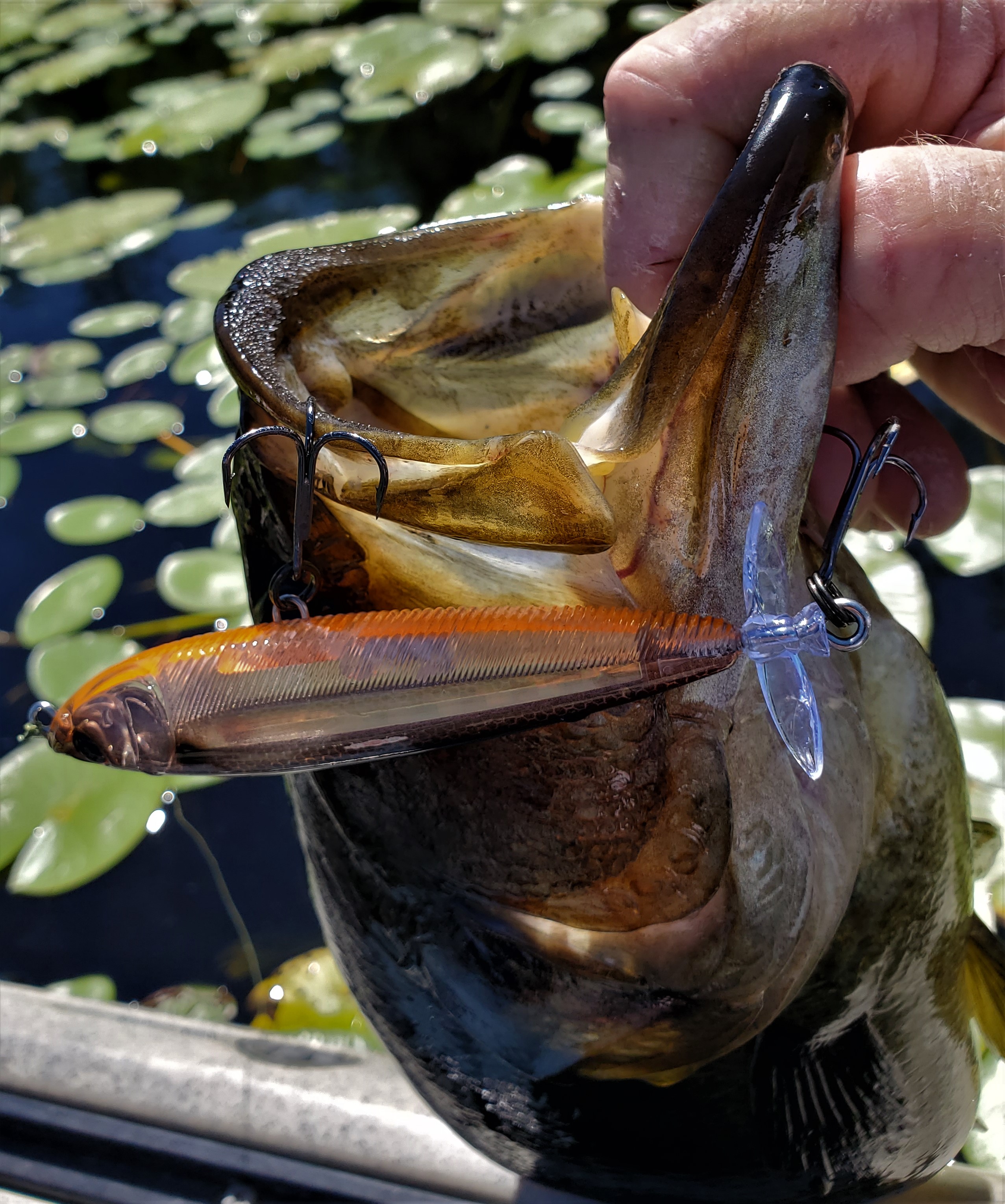 The changing of the seasons oftentimes makes it is necessary to modify fishing approaches in order improve fish catching opportunities. Like with any other lure type, changing up topwater presentations from spring through fall can lead to catching more bass as they shift their focus toward different types of prey and forage eaten with each of these seasons. Yo-Zuri hardbaits are a great option to consider for these necessary seasonal changes as they offer a host of different topwater lures and patterns to fit whatever situation with which the fish present us.
The changing of the seasons oftentimes makes it is necessary to modify fishing approaches in order improve fish catching opportunities. Like with any other lure type, changing up topwater presentations from spring through fall can lead to catching more bass as they shift their focus toward different types of prey and forage eaten with each of these seasons. Yo-Zuri hardbaits are a great option to consider for these necessary seasonal changes as they offer a host of different topwater lures and patterns to fit whatever situation with which the fish present us.
Spring
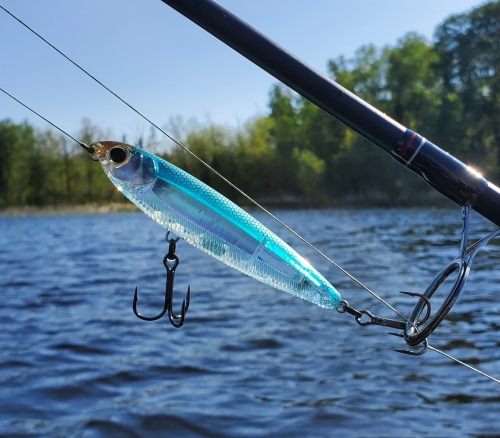
The Yo-Zuri 3DB Pencil is one of my favorite springtime lures as the fish are getting aggressive and ready to feed heavily after being hunkered down by several months of winter. These Pencils are big enough to get a fish’s attention as they prepare for the upcoming spawn, and they can be worked slow enough in the case that some fish might be more lethargic during cold front conditions. If the water and/or air temperature is lower than 50 degrees, I like going with a straight twitch and pause retrieve while using a 4” Pencil. Moving the lure 1-2’ at a time slowly forward and then pausing for up to 10 seconds can be highly effective. The pause is the key because that is when many fish will either strike or position themselves right under the lure to strike it when it starts moving again. After air and water temperatures supersede 50 degrees, then it is time to go with the classic “walk-the-dog” style retrieve where the lure moves from side to side while using a 5” Pencil. Warmer surface temperatures in spring can mean more and bigger minnows swimming in schools near the surface or in shallower bays, and when that happens, the aggressive nature of the side-to-side movement can elicit strikes because of predators already looking up and feeding on bigger active minnows.
Summer
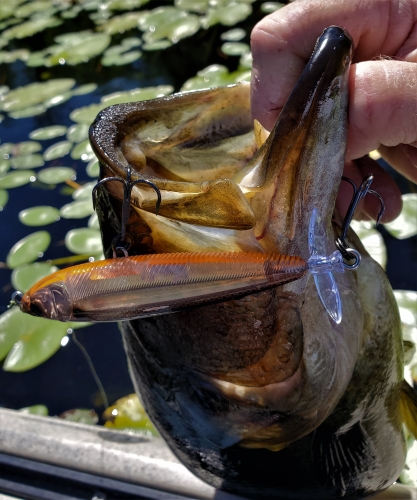
Once surface temperatures exceed the low 60s, we often see a significant increase in the amount of active bug life on the water. One specific insect that I look for during the summer months is dragonflies. When I see dragonflies, I switch from the Pencil to the Yo-Zuri 3DB Prop. The key to the Prop is that it has a plastic propeller which simulates the sound that a dragonfly makes when it is flapping its wings on top of the water. This lure can be used effectively from sunup to sundown, even when it is extremely sunny and calm, because of the presence of dragonflies. A general retrieve that I like to use is to cast the 3DB Prop parallel to emergent weeds that are adjacent to submergent vegetation and use a start-and-stop retrieve. I like to cast the lure, let it sit for 5-10 seconds so that fish can begin keying in on its silhouette right from the start of the cast, and then I go with anywhere from 1-4 cranks of the reel handle. The goal is to get the plastic prop to sound like a dragonfly’s wings flapping on the water, so sometimes reeling slower is necessary to make sure they can target the lure and eat it. Waiting to feel the fish’s weight during the strike will be paramount to improve the number of fish being hooked because simply going by sight might lead to pulling the lure away from the fish.
Fall
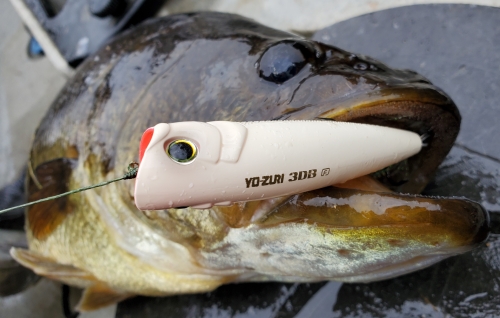
Fall is one of my favorite times of year to use topwaters as bass are hungry and feeding heavily in preparation for the upcoming long winter months ahead. The key to fall strategies for topwater lures is that I go by the first hard frost of the year versus when the calendar indicates the beginning of this season. Sometimes this happens in late August and sometimes it occurs in the at the end of September. My favorite way to pursue bass in the fall is with a Yo-Zuri 3DB Popper. I have found that using heavier line, like a 50 or even 65 lb braid, can be useful when tied directly to Poppers this time of year because I like to cast them right into any remaining emergent weed cover (even if it is dead due to frost) and retrieve it out over submergent weeds. Poppers work great in late fall as they offer a larger profile meal with little energy expenditure needed to chase them down. The Popper retrieve in fall is all about slowing things down and being patient. A cast usually entails letting the lure sit for up to 20 seconds or more after hitting the water, twitching the lure slowly 1-4 times so that it gurgles instead of splashes, and then pausing up to 20 seconds again. Using Poppers in late fall is often a case of the adage, “less is more,” when it comes to movement and noise on top of the water.
Being versatile with topwater hardbaits and adjusting the lure used based on the season can reap significant improvements in the numbers of fish that are landed. If you are looking for some exciting explosive bass action during the transitions from spring through fall, then casting an assortment of Yo-Zuri Pencils, Props, and Poppers is well worth your effort!
Mark Maule
Breaking Down Ice Fishing for Beginners- by Will Nalley
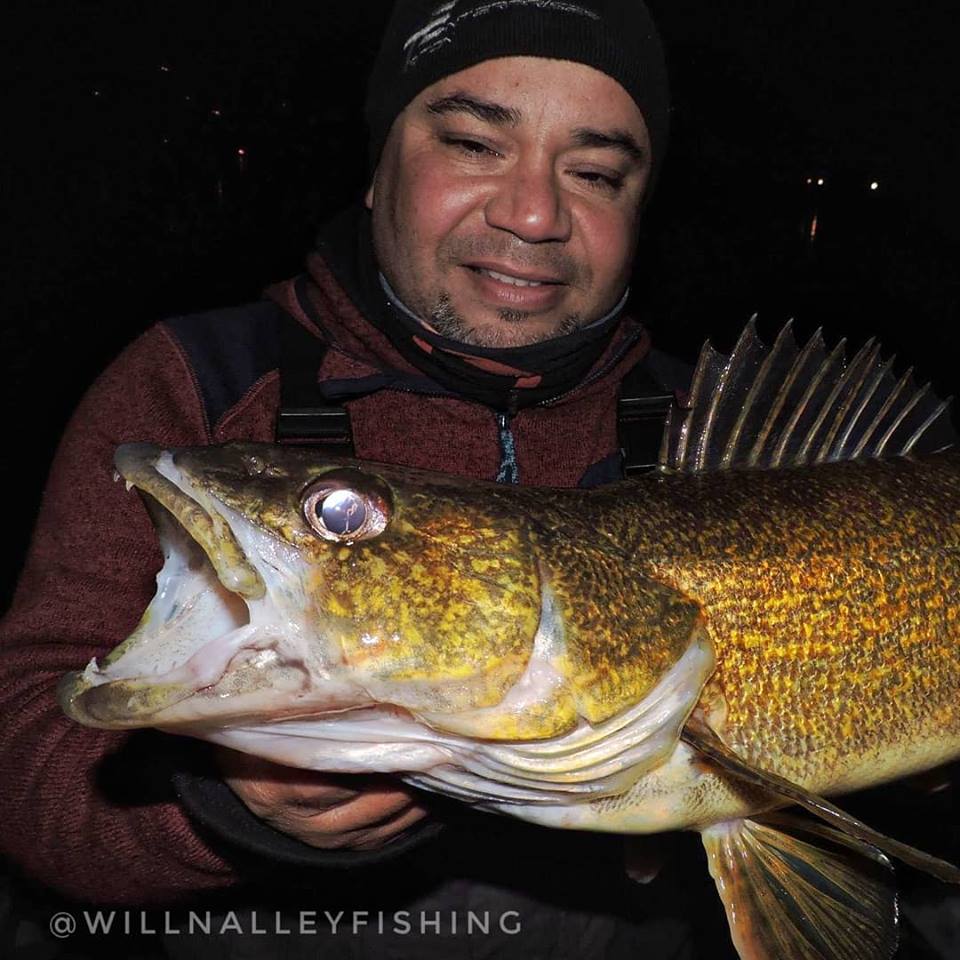 Safety:
Safety:
The first and foremost thing we need to talk about here is safety, and that is NEVER give the ice more credit than what it is due. Make sure to have crazy amounts of caution when fishing the ice, the last thing you want is to break through and risk hypothermia. That being stated, always remember the buddy system: ice fishing is not something I suggest anyone do alone. If you do go somewhere alone, make sure there are other people in the area and you tell people where you are going. It is always a good idea to wear flotation clothing just for ice anglers, or perhaps what I do and wear a life jacket. I know they are big and bulky, but its better safe than sorry. The suggested ice thickness that everyone I know abides by is 4” to walk on, 6” for an ATV or snowmobile, and 12” for vehicles. Always have a spud with you to check the ice thickness.
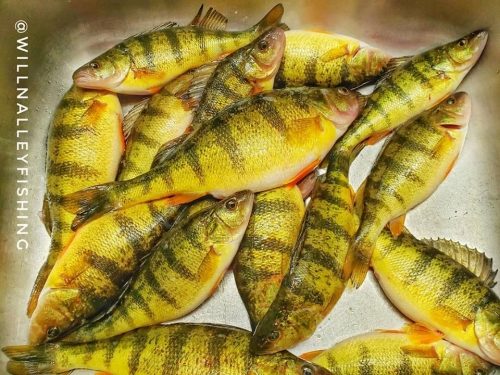
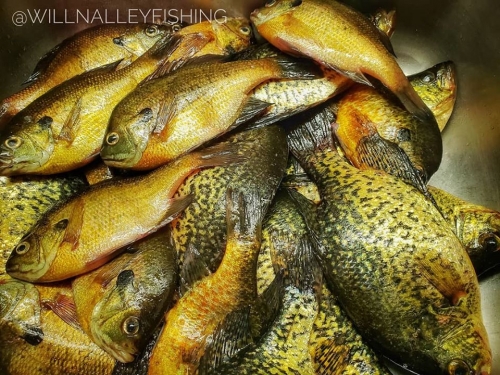
Species:
This is one of my favorite times of year to fish because the best eating fish can be caught. Those include the Panfish, Bluegills, Yellow Perch, Walleye, and Crappie. Yes, I know you will have to brave some crazy elements to make this happen; but it is well worth it when you can get on a good pile of them. This time of year; however, the fish have to eat to generate some sort of heat. So if you drill your hole around them and have a hardbait that is UV with rattles, it’s typically not hard to get them to bite.
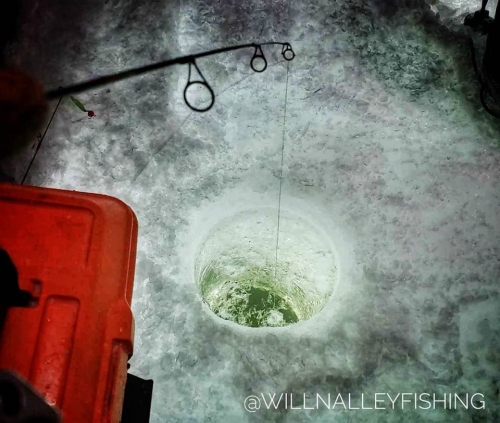
What to target:
This is where experience on the lake you are ice fishing really comes into play and so does a good depth finder and mapping system. I typically want to target some piece of structure and weed lines, and fishing the warmer months in open water is really the only way to find this. You can certainly find some solid weed lines and edges in 6-12 feet of water that are holding fish. This is because the chunk rocks in these areas hold healthier vegetation and heat, which the fish will relate to. Structure though, is where I find the better walleye and crappie. So it pays off to know the best areas of structure of transitions off flats.
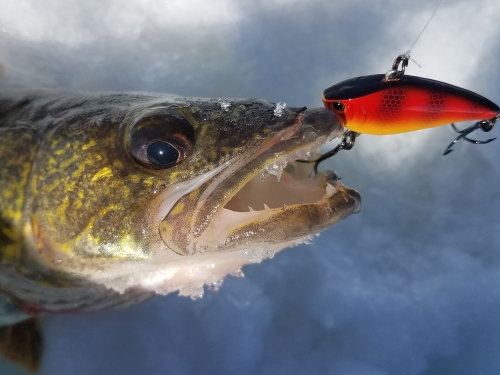
Weather conditions:
This is where it gets a little bit tricky to justify when the best times to go are, because it is always cold. As much as I hate to say it for the anglers that do not like the cold, the night time is the best time to get out there. The last few hours of daylight in the day into the dusk/night fall hours have always seemed to be the best for me. I believe this is because the moon and gravity force become less at night allowing the fish to move around a little easier in the cold conditions.
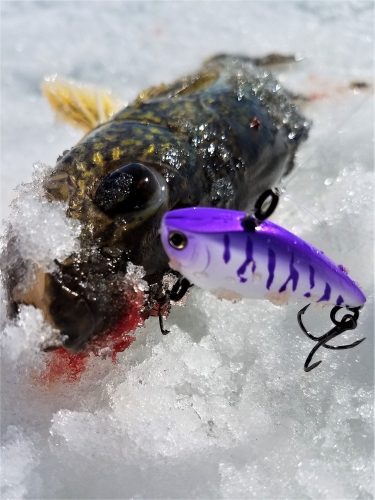
What to take with you:
Flasher/sounder/camera- a combo of a flasher and camera is pretty much all you need. I’ve found that an LCD display sonar is great for larger fish generally, as you have history on the screen which you lose when you use a flasher which provides real-time feedback on fish and lure location, but there is no history.
GPS – ideally you’ve done your homework ‘ground-truthing’ spots during open water with your boat – the GPS is also great for new spots, and finding your way to safety if you’re in whiteout condition.
Gas powered Drill with 24” bit- This is for drilling your hole to drop your flasher/ camera and fishing out of.
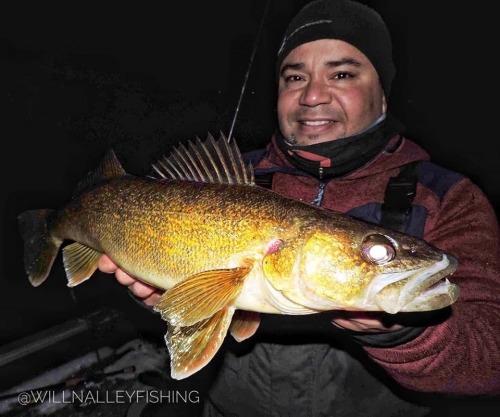
Biggest Mistakes by Beginners:
Panfish – line too thick, and lure size too big for the size of the presentation and the species target.
Larger predators – for walleyes – fishing the wrong times of the day or targeting them in water considered to be less than optimal in depth, there are always exceptions to the rule here if you have some history to go off of. Very common today for people to use a braid and fluorocarbon leader – often the fluorocarbon will be added to a swivel if you’re using a rotating presentation. Because of dropping strait down, this will create line twists. Braid can be problematic in very cold temps – if you’re in a hut, you’re in business. Larger fluorocarbon requires a larger size spool to manage the stiffness of the line.
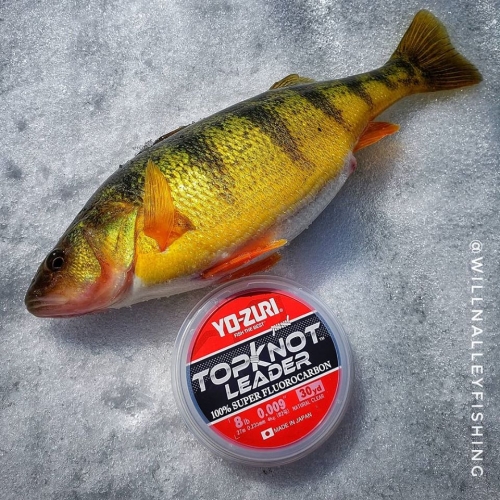
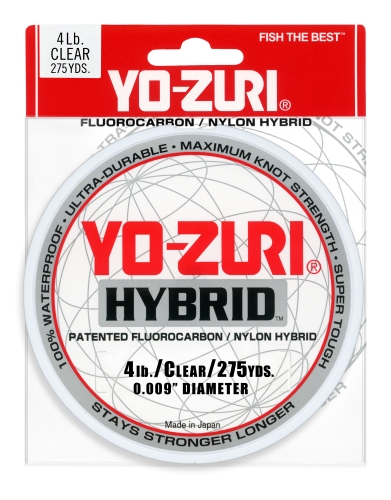
Yo-Zuri Product to Take:
-Hybrid line in 4lb test, this is definitely a style of fishing that you want the smallest diameter line you can get away with.
-8lb TopKnot Leader, this is something I like to use when fishing for bigger walleyes. I also think it helps the bait sink faster when I see a fish on my camera or flasher.
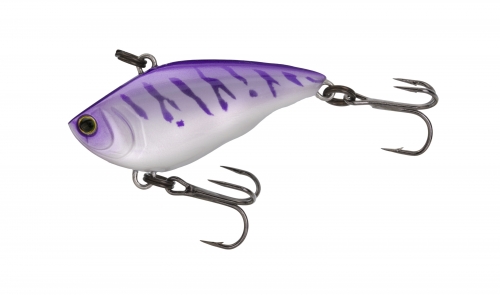
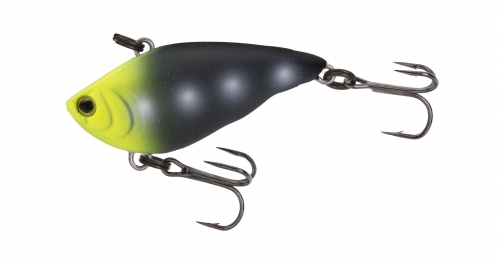
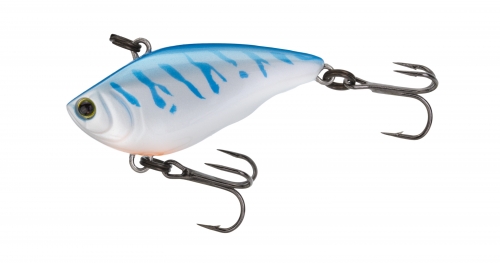
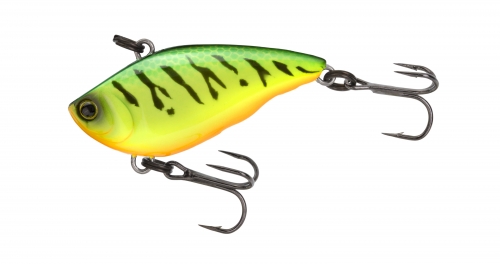
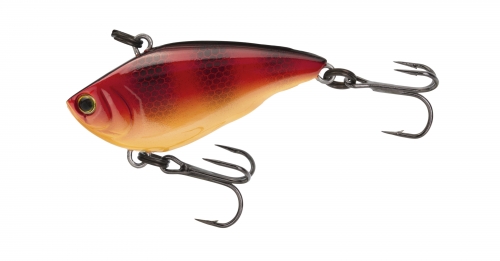
-NEW Rattl’N Vibe Mini, this is a bait designed specifically for ice fishing anglers. I definitely love the UV colors since I fish so much at night, but also my favorites are Firetiger, Gold with Black Back, and Hot Perch
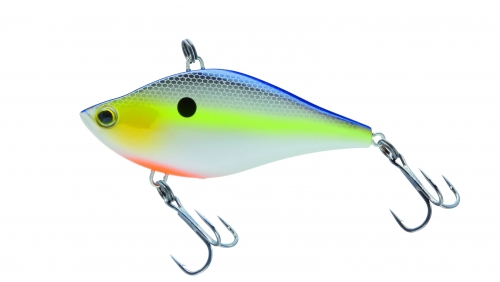
-3DS Vibe, this is a bait I catch a lot of bigger walleyes on and it seems to have a great falling action through the water column. Usually the fish eat this bait on the initial drop.
SHARKS ON THE BEACH!!!!!! –by Chris Bishop
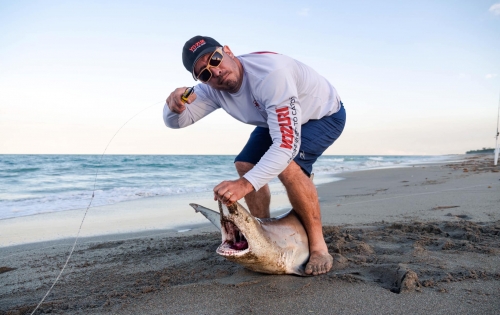
Fishing for sharks anyone? As crazy as this may sound; this is often one of my favorite species to target and the time to target them is now. Now, we are not talking about filming the next episode of JAWS, we are talking about fishing the surf and going after the Black Tips and Spinner Shark species.
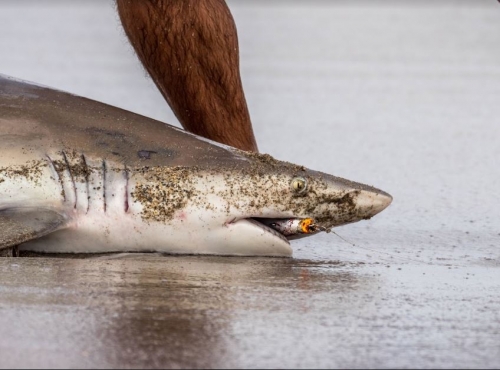
How do you locate sharks that are catchable? Well, remember sharks are predators like most other species of saltwater fish. Therefore, find the bait and you find the sharks. Common bait you want to look for is Bluefish, small Jack Crevalle, Pompano, and Spanish Mackerel. It is not hard to find them because you’ll see the Spinner Sharks jumping out of the water and also busting the top after schools of bait. Overcast weather conditions seem to be the most favored, however sometimes the weather does not make a difference, sharks are hungry no matter what time of day it is. Usually the migration period for the Black Tip Sharks and Spinner Sharks is January through March.
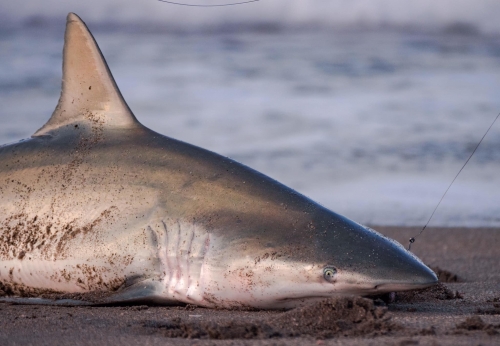
Topwater baits are the guaranteed best bait to throw for feeding sharks. Again, a topwater mimics a wounded bait fish and creates a large water displacement. The sharks will locate the lure based on sound and motion. For the best choice in topwaters; try using the Yo-Zuri Surface Cruiser or Hydro Popper. Common colors to consider are Red Head, Pearl Yellow Pink, Dorado, and Sardine. Also, another important aspect to think about is your rod and reel setup. I would recommend using a spinning reel that can carry up to 300 yards of 50lb Yo-Zuri SuperBraid. A 20-50lb spinning rod is a strong enough rod to fight the sharks and is long enough to increase casting distance from the beach. The most critical component of this operation is the leader. I use 100lb-130lb TopKnot Leader and you want to use a really long leader. There are two reasons for this: sharks will jump and spin wrapping themselves up in the line, sharks have sharp fins and tails that can cut the line if it is too small. Another tip is to replace the treble hooks with inline J hooks; this makes it easier for unhooking the sharks once you reel them to land.


Shark fishing is not something for the faint at heart, however can definitely be something to cross off the bucket list not many anglers get to try. If you’re vacationing in south Florida in the winter months and want to catch a bizarre species not many people attempt look into land-based shark fishing!!!
Late Winter Offshore Mahi Bite Picking Up!!! –Matt George
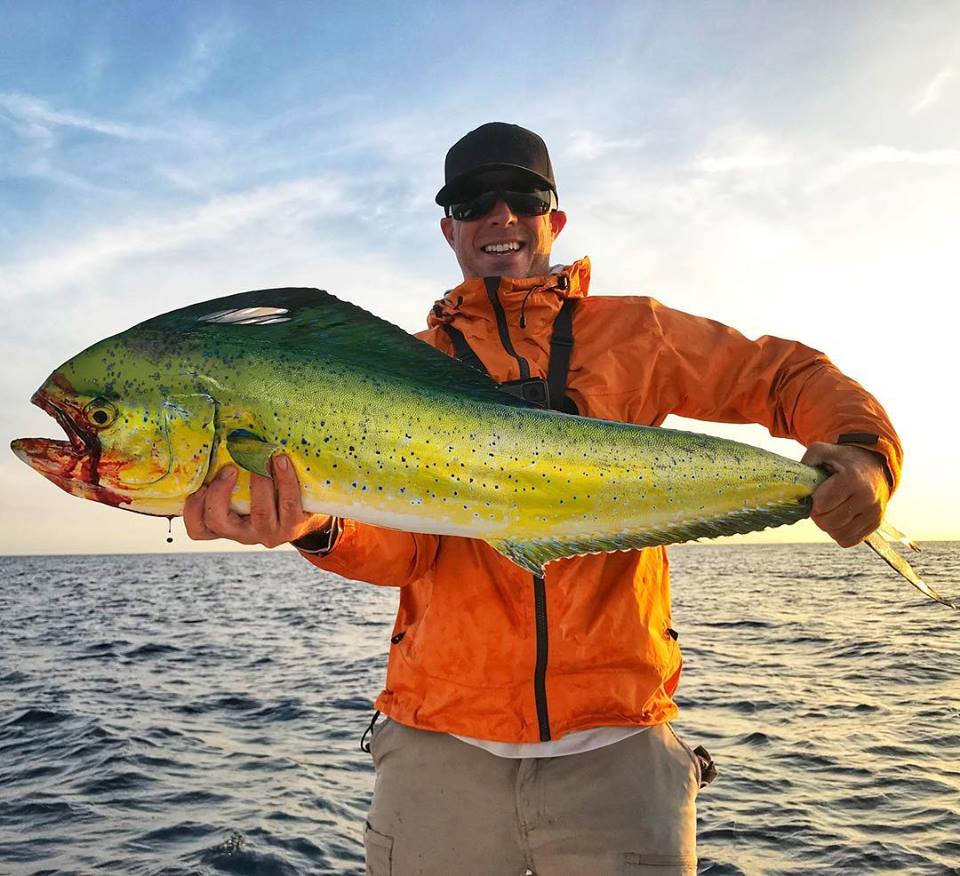 Matt George, one of the craziest but respected personalities to the Yo-Zuri family. Matt grew up in the northeast US, but has called Florida home for several years now. When not traveling for business all over the world, he spends his down time wisely fishing inshore and offshore.
Matt George, one of the craziest but respected personalities to the Yo-Zuri family. Matt grew up in the northeast US, but has called Florida home for several years now. When not traveling for business all over the world, he spends his down time wisely fishing inshore and offshore.
“To me, I don’t care what I am catching as long as I am on the water. But lately the offshore bite has been really picking up. Following a strong pattern lately is turning into more success on the water. Let the birds help you find the bait, let the bait be your GPS, and bring on the exhilarating fight that lies before you.”
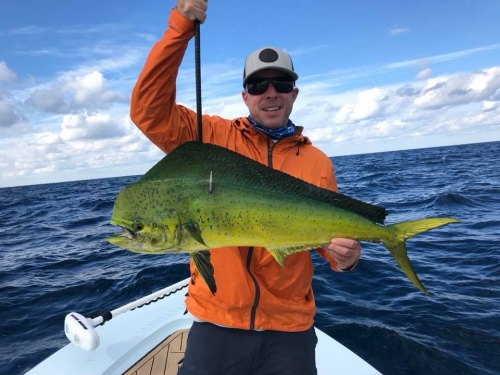
Recently, Matt is spending more time chasing the offshore bite as it is picking up. As winter is coming to a close in south Florida, the bait abundance is increasing and so is the bite.
“Right now I am hitting the water as early as possible and making a 8-12 mile run out. The key depth is anywhere between 100-200 feet. That may seem like a lot, but in your search for lurking Mahi it is easy to eliminate water quickly. Once you find that sweet spot, it is all easy pickings at that point.”
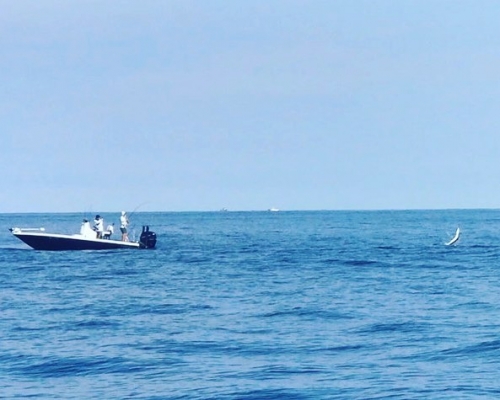
To duplicate what Matt is doing, you have to find the water that will most likely have bait, again Mahi have huge appetites and are predators. Once you find the bait you can find the fish. Along with the right amount of depth, Matt suggests looking for the temperature changes. This little subtlety could be key, but also the any irregularities in the water. Weed lines, cleaner water, dirties water, whatever may appear different out in the ocean could be the ticket. From there just find the bait which is usually accompanied by diving birds.
“The added bonus right now is on top of the Mahi I am catching, I am also finding a mix of Sailfish, again one of favorite species to target. Recent trips I am averaging 3-4 keeper Mahi and about the same number of sails. The days out there have been really fortunate and exciting!”

Matt is using a 2-way approach to targeting his catch. The traditional trolling method and topwater have paid off the best. For the trolling methods, he is rigging live bait on 30lb Yo-Zuri Blue SuperBraid with 30lb TopKnot Fluorocarbon Leader. The topwater he has been using is the Yo-Zuri Hydro Popper on a spinning outfit with the same line and leader. For the popper, Matt emphasizes to always use a loop knot when adjoining your leader to a topwater bait. This always creates the best action on the water.
Targeting Peacock Bass in South Florida with a Yo-Zuri Crystal Minnow -Robert Di Nino
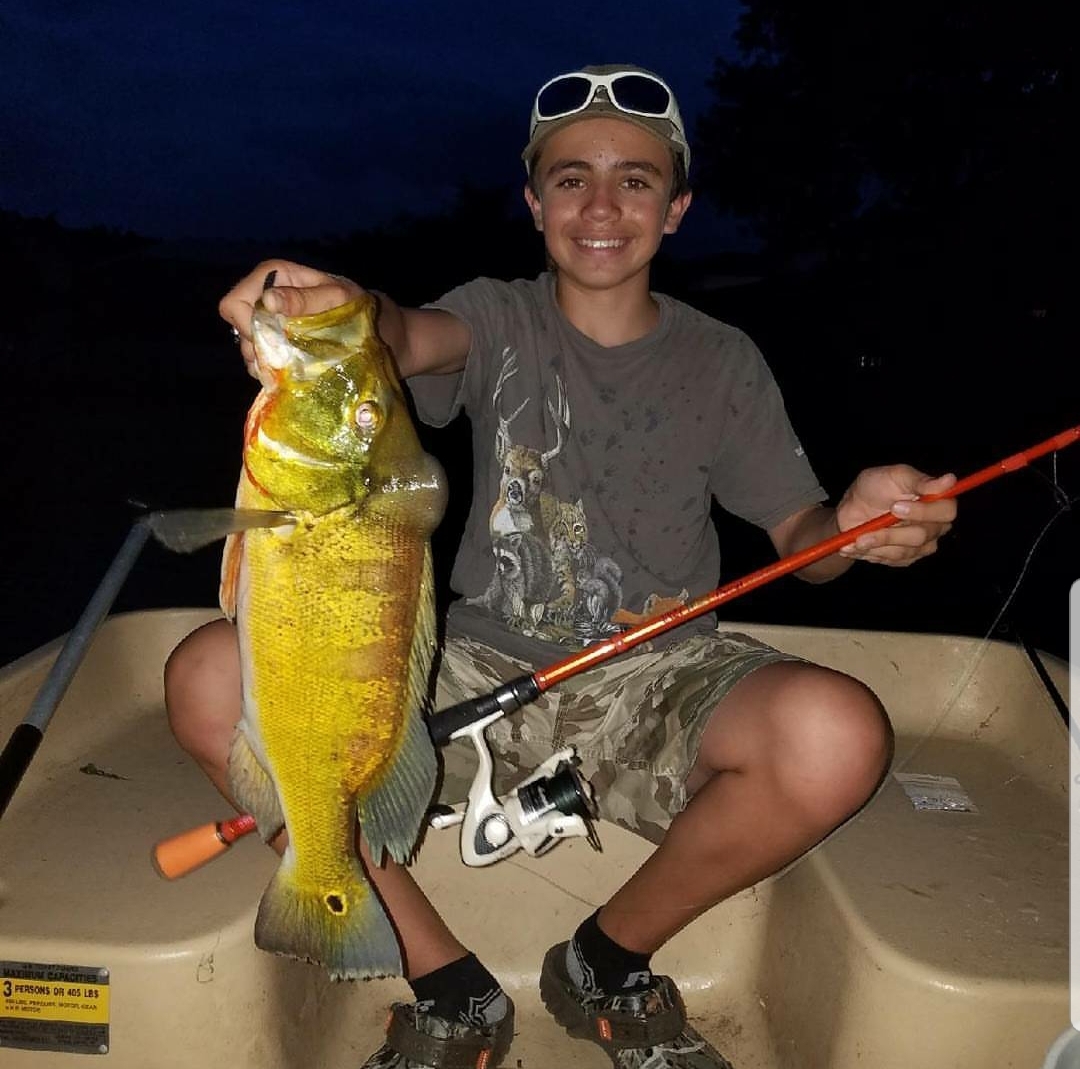 Living is South Florida, I feel blessed to have so many species of fish within a short drive from home. Most of these prized fish can also be caught from the shore. My favorite fresh water fish is the Butterfly Peacock Bass. The Peacock Bass will be found from South Miami to Palm Beach since they cannot tolerate water temperatures below 60 degrees. As crazy as it sounds, we still see cooler temperatures here in Florida.
Living is South Florida, I feel blessed to have so many species of fish within a short drive from home. Most of these prized fish can also be caught from the shore. My favorite fresh water fish is the Butterfly Peacock Bass. The Peacock Bass will be found from South Miami to Palm Beach since they cannot tolerate water temperatures below 60 degrees. As crazy as it sounds, we still see cooler temperatures here in Florida.
.jpg)
Target them in canals, ponds, and lakes, and specifically in shady areas around bridges, culverts, canal intersections, bends, dead ends, and near fallen trees. They feed in the shallow water adjacent shorelines. When I am specifically targeting the Butterfly Peacock Bass, my go to lure is the Yo-Zuri Crystal Minnow. However, whether you are targeting largemouth and peacocks in fresh water or snook, tarpon, and jacks in saltwater, fishing from the shore or your boat, the Yo-Zuri Crystal Minnow truly does it all.
.jpg)
My go-to set up is the 3.5 inch suspending in the bronze color on a medium heaving spinning rod with 20lb Yo-Zuri SuperBraid and 15lb TopKnot fluorocarbon leader if the water is clear. My favorite conditions are when there is lots of small-medium sized baitfish in the area.
A Knotted Up Mess!!! (pt. 2)
Previously we talked about different knots to tie in freshwater applications, but now let’s dive into another simpler topic. From the time I move to Florida and started getting more experienced into saltwater fishing I quickly learned that saltwater anglers stick to the basics; this includes the knots they tie. Now just like freshwater anglers, everyone has their preferences but from what I have experienced is anglers stick to the knots: loop knot and Uni-Knot for tying to their favorite Yo-Zuri lure, Uni-to-Uni Knot for adjoining main lines to leaders, and then there is the art of crimping.
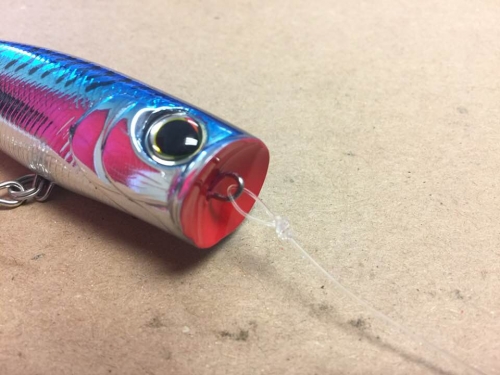
The basic loop knot is probably used the most in saltwater fishing because it is simple to tie with heavier fluorocarbon or monofilament leaders. Tying a loop knot also gives the bait the ability to move more freely in the water, which will create more action. As you can see in the photo, the actual knot is away from the lure, not at the actual line tie.
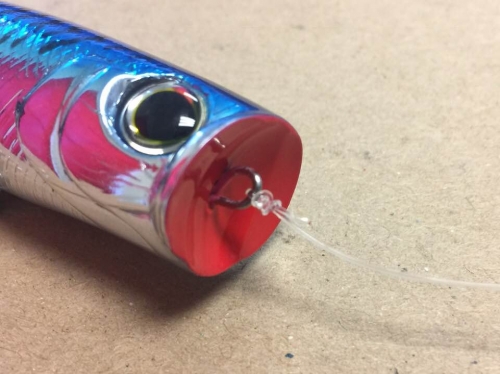
The Uni-Knot is also a favorite among saltwater anglers for the same attributes as the loop knot; it is easy to tie, works well with larger pound test line, however does not give the bait an extra moving ability. The Uni-Knot is tied directly to the lure line tie and is common to tie for the baits that just swim through the water column and resemble a bait fish.

One popular fishing technique that is shared among both freshwater and saltwater anglers, using a braided mainline to a leader material. Commonly anglers use a Uni-to-Uni knot for this application. Typically an angler will wrap the leader material four or five times around the braided mainline to form one Uni-Knot, then wrap the braid around the leader material ten to fifteen times to form the second Uni-Knot before tying them tight together. This knot is relatively small and will easily go through your rod guides when casting. The friction on the two knots is pulling against one another so the Uni-to-Uni Knot will hold up well.
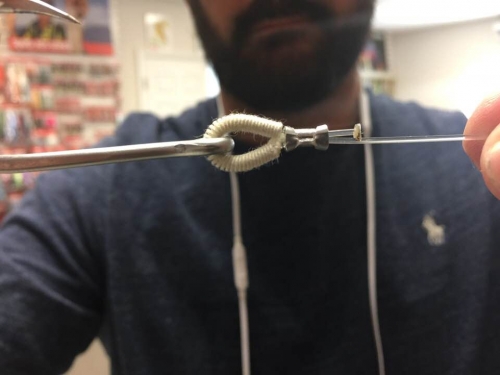
Finally, another form of knot tying that requires tool is not really a knot: crimping!!! Crimping is something a lot of saltwater anglers will use for tying on lures with heavy and large test line. Commonly anglers will implement a crimping technique when using 80lb test or larger; something for fishing to beat world records!!! Crimping tools required are: Crimpers, a Crimp, Chaff Tubing, and of course your favorite Yo-Zuri lure or one hook for live bait fishing. To perform this properly you will want to: feed the mainline through the crimp and chaff tubing, go around the eye of the lure, and feed through the crimp again. It is suggested that pull all the components as far down as you can but still leave a little room in case the mainline does slip a little. This is very common anglers that are using live bait with larger leaders and trolling bait (Yo-Zuri Bonita and Mag Speed Vibe are common examples).
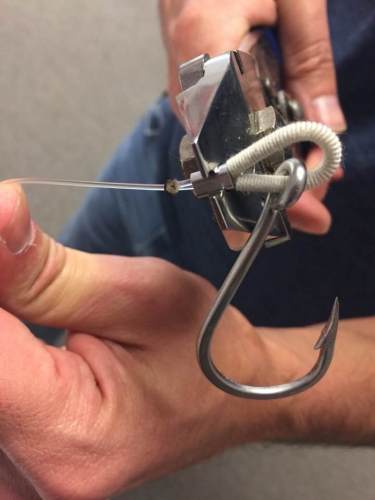
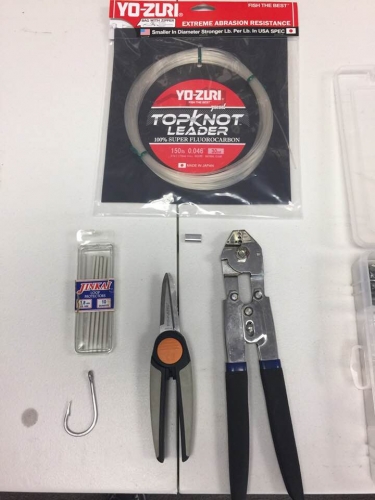
Kayaking in Paradise – Lance Clinton
The weather is just getting perfect and the bite down here in Costa Rica is on!!! Down here in my little piece of paradise I am fishing every day and have dream trips catching Mahi, Cubera, Wahoo, and Rooster. The Mahi are not on a full run yet where I am fishing, however I am catching the occasional few. The Cubera and Wahoo bite is going crazy right now, and fishing for them out of a kayak adds to the excitement.
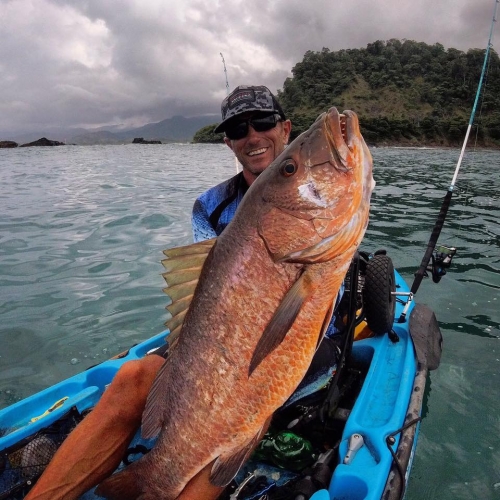
I am finding myself having to paddle about 2 miles off shore right now to locate a solid bite. I start every morning around 5:00 and am usually back at the dock in time for lunch. By then anyway, my arms are so tired from fighting fish all morning I barely find the strength to paddle back in. Typically the best days have been in a post-frontal, cloudy condition. This weather pattern will generally create more current coming out of the rivers and stir up the bait fish. This creates a feeding frenzy for the fish and a perfect time to catch multiple trophies each day.
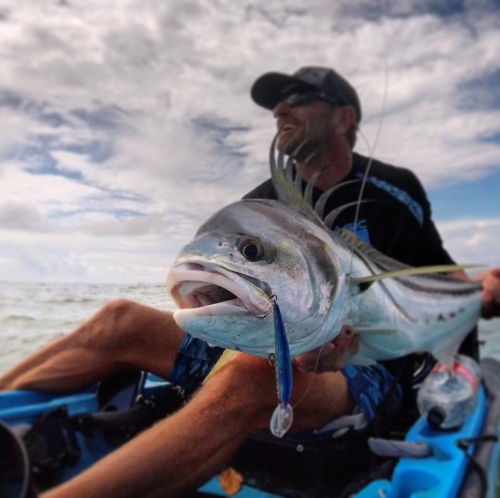
My typical set up is a 7’ rod with a big spinning reel on it. I will advise anyone to not go cheap on a spinning reel, the general rule is the more you invest in a quality spinning reel the more likely you are to land more fish. A better quality spinning reel provides a better drag system and anyone that fishes offshore knows, fish will rip your drag a lot in a fight. Because of the larger spools on spinning reels offered today in the market I am able to get away with higher pound Yo-Zuri SuperBraid. Typically I run a 65lb Superbraid with a 40-60lb clear Yo-Zuri TopKnot Leader. The heavier line is what I trust when fishing shallower around boulders and rough bottom. You just have to let the fish tell you where to fish to catch them, and this is usually following the bait.
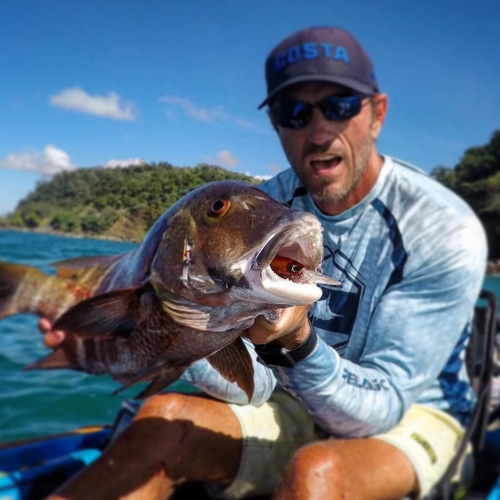
When thinking about bait selection, I generally follow this rule of thumb: “anything will work as long as it’s Yo-Zuri.” My box is usually loaded down with Hydro Minnows, Crystal Minnows, and Mag Minnows. Sometimes in the morning I will mix in using the 3D Popper on very calm mornings. The retrieve varies based on the species; Roosters seem to prefer a very fast action retrieve, but Cubera and Wahoo seem to really prefer the slow retrieve. I generally cast a bait out and rip it violently but give it long pauses in between rips; lately it seems like the longer the pause the better. There is no question when you get a bite so pay attention!!!
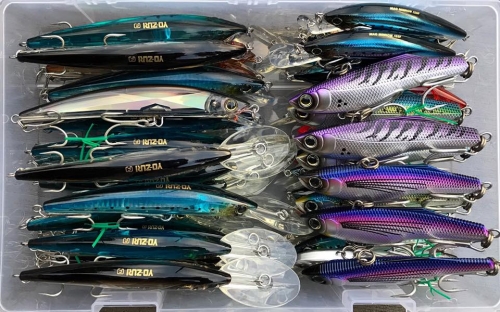
If you’re planning a vacation soon and are angler; you’re crazy not to have Costa Rica on your bucket list. Make sure to stop by your local tackle store to get a few Yo-Zuri lures on your way. Happy fishing and see you out there!!!!!
